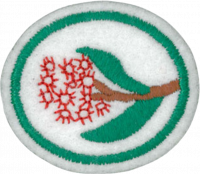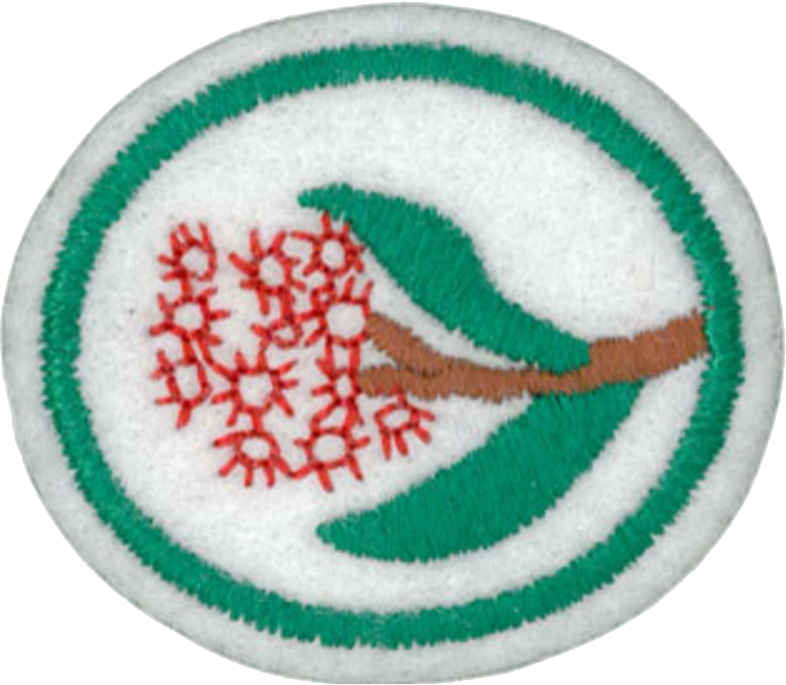AY Honors/Eucaliptos/Answer Key
Nivel de destreza
1
Año
Desconocido
Version
29.09.2025
Autoridad de aprobación
Asociación General
1
2
2a
2b
3
3a
3b
4
4a
4b
4c
4d
5
6
6a
6b
Many Eucalyptus species have a tendency to drop entire branches off as they grow. Eucalyptus forests are littered with dead branches. Many people have been killed as they camped underneath the trees. It is thought the trees shed very large branches to conserve water during periods of drought.
7
7a
7b
The Blue mallee, or Blue-leaved mallee (Eucalyptus polybractea) is a small multi-trunked sclerophyll tree that grows naturally in western New South Wales and Victoria, Australia. E. polybractea is the major species used to produce high grade cineole-rich (up to 91% 1,8-cineole) Eucalyptus oil, yielding 0.7-5% fresh weight. The oil is primarily used medicinally and for flavoring.
Eucalyptol (another name for the oil), is produced in Victoria, Australia in the regions of St. Arnaud, Inglewood, and Wedderburn.
8
Because of its pleasant spicy aroma and taste, eucalyptol is used in flavorings, fragrances, and cosmetics. It is also an ingredient in many brands of mouthwash and cough suppressant. Eucalyptol has also been found to be able to kill leukaemic cells.
Eucalyptus oil contains compounds that are powerful natural disinfectants and which can be toxic in large quantities. Several marsupial herbivores, notably koalas and some possums, are relatively tolerant of it. The close correlation of these oils with other more potent toxins allows koalas and other marsupial species to make food choices based on the smell of the leaves.
Eucalyptus flowers produce a great abundance of nectar, providing food for many pollinators including insects, birds, bats and possums.
It is one of many compounds that is attractive to males of various species of orchid bees, who apparently gather the chemical to synthesize pheromones; it is commonly used as bait to attract and collect these bees for study.
The Karri and the Yellow box varieties are important sources of wood for lumber. Due to their fast growth the foremost benefit of these trees is the wood. They provide many desirable characteristics for use as ornament, timber, firewood and pulpwood. Fast growth also makes eucalypts suitable as windbreaks. Eucalypts draw a tremendous amount of water from the soil through the process of transpiration. They have been planted (or re-planted) in some places to lower the water table and reduce soil salination. Eucalypts have also been used as a way of reducing malaria by draining the soil in Algeria, Sicily, Europe, and California.
Eucalyptus is also used to make the digeridoo, a musical wind instrument made popular by the Aborigines of Australia.
All parts of the eucalyptus may be used to make plant dyes that are substantive on protein fibers (silk and wool) simply by processing the plant part with water. Colors to be achieved range from yellow and orange through green, tan, chocolate and deep rust red. The material remaining after processing can be safely used as mulch.
9
For this requirement, you will need to visit a place where Eucalypts grow, such as Australia or California. There are only 2 types widely grown in California however the river red gum (E. camaldulensis) and the much more abundant Tasmanian blue gum (E. globulus) while there are nearly 600 varieties available in Australia.
You will also need a field guide to help you identify the various eucalypt species. Here are some suggested publications that might be useful:
- Know Your Own Trees: A Short Introduction to the Study of Our Common Eucalypts
- Australian eucalypts: A selection of over 80 tree studies with notes on characteristics, identification, uses and cultivation
- Eucalypts: A Bushwalker's Guide from Newcastle to Wollongong
- The Urban Tree Book: An Uncommon Field Guide for City and Town



